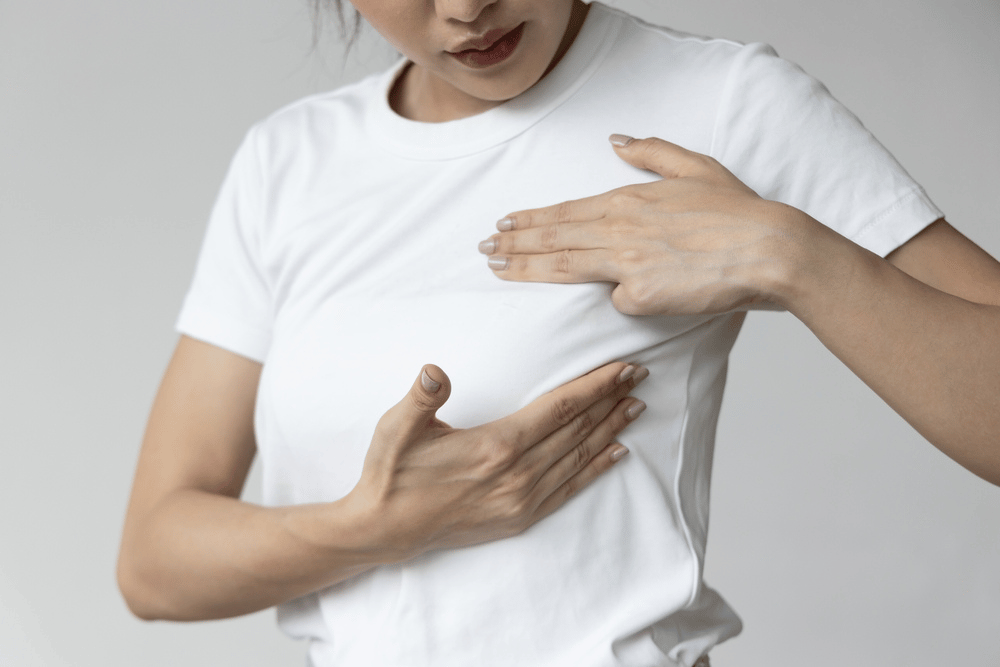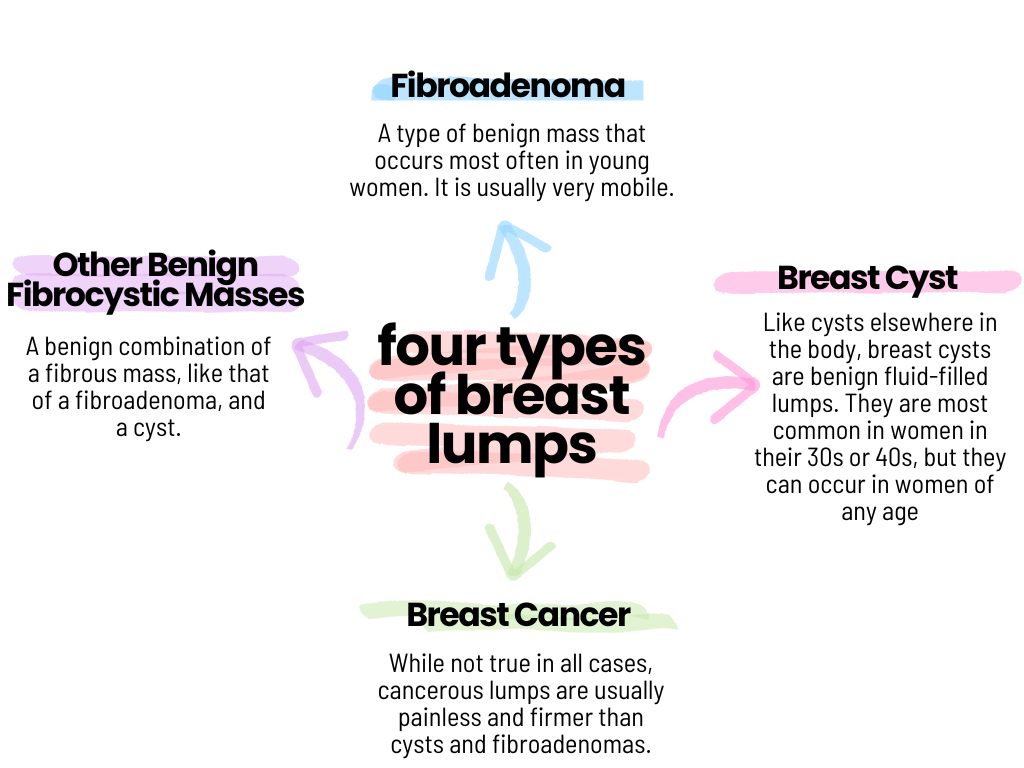
If you do find a lump in your breast, however, don’t panic. According to the American Cancer Society, four out of five biopsies of breast lumps are benignNot harmful; not cancerous (referring to a cell or mass)., meaning that they are harmless and certainly not breast cancer.
Breast Lump Types

Causes of Benign Breast Lumps & Painful Breast Lumps
Good news! If your lump is painful, it is likely not breast cancer. There are actually a lot of possible explanations for lumps in your breasts besides cancer:
-
- Normal hormonal breast tissue changes
- Breast infection (mastitisBreast infection or inflammation.)
- Fatty lumps formed as a result of trauma
- Some medicines can cause breast lumps
- Certain conditions: Fibrocystic breasts; benign cysts; fibroadenomas; intraductal papillomas – most of these are types of hard or rubbery lumps in the milk ducts and surrounding breast tissue, strongly related to the menstrual cycle and hormone levels.
Many of these are related to natural hormoneA chemical substance produced in the body that controls and regulates the activity of certain cells or organs. cycle changes, with some women simply more susceptible to breast lumps than others. Sometimes lumps come and go in cycles or are more temporary due to injury, infection or medication. Benign breast lumps usually have smooth edges and will move around slightly when pushed against. They are often found in both breasts.
What To Do If You Find A Breast Lump
Don’t panic—most breast lumps aren’t cancer. But here’s what you should do to stay safe and informed:
-
- Stay calm. About 80% of breast lumps are not cancer, but it’s still important to take every change seriously.
- Call your doctor. Any lump, thickening, or change should be checked by a healthcare provider as soon as possible.
- Don’t wait. Early detection makes a big difference. If it is cancer, finding it early increases your chances of successful treatment.
- Know your normal. Do regular breast self-exams so you can spot anything unusual right away.
- Track changes. Your breasts can feel different throughout your menstrual cycle. Knowing what’s typical for you helps you notice when something isn’t.
- Get expert help. Your doctor may recommend a clinical breast exam, mammogram, or other tests for peace of mind.
Remember: Most lumps are harmless, but no lump should ever be ignored. When in doubt, check it out.